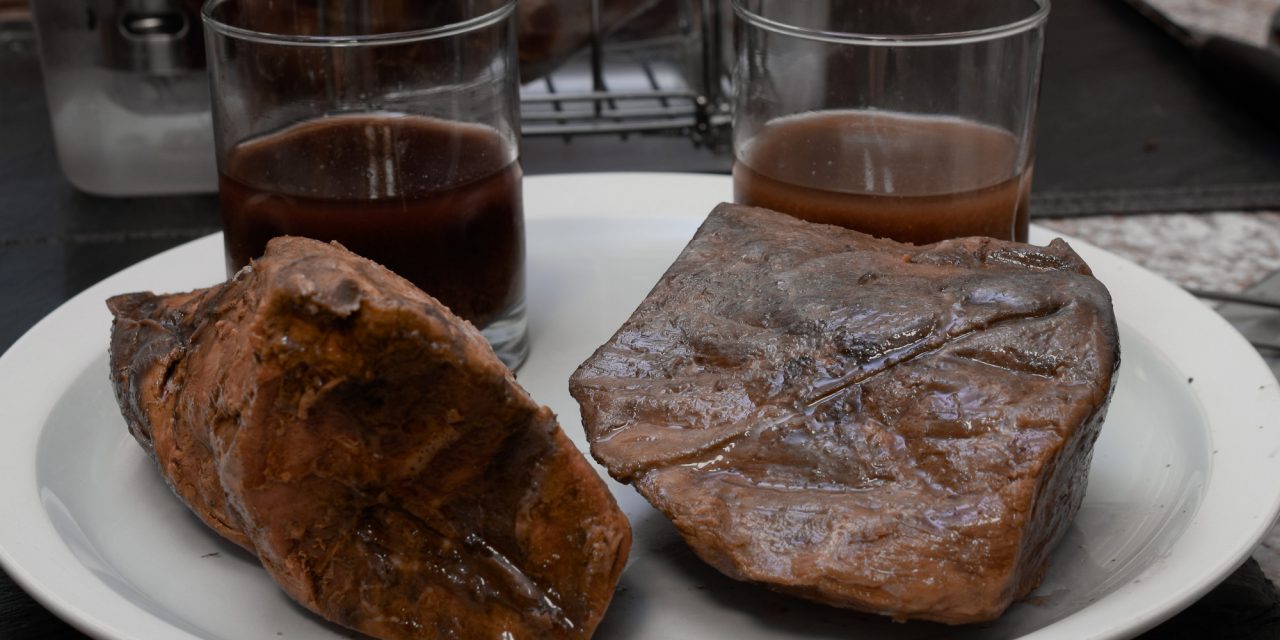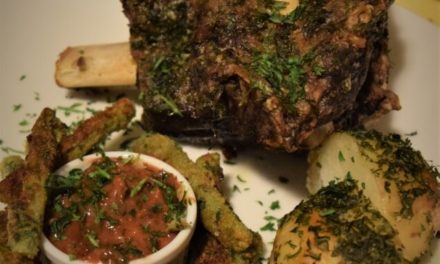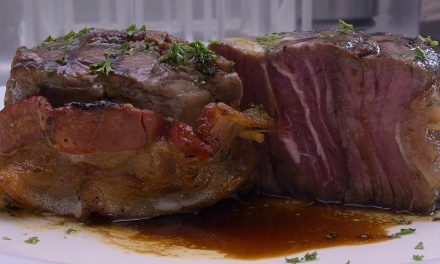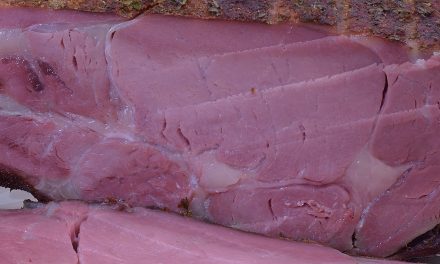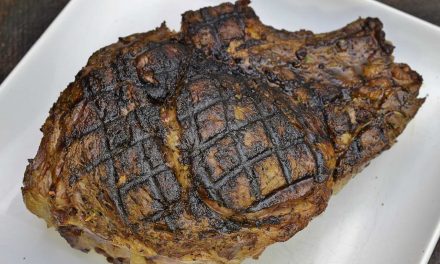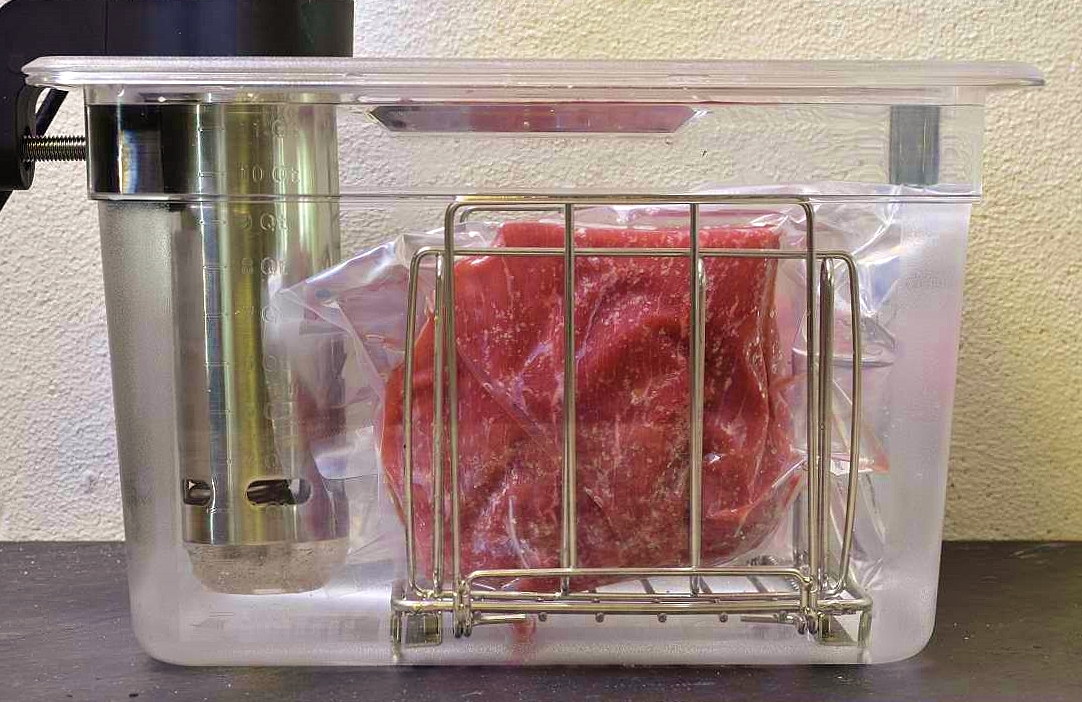
Salt in the bag?
The debate as to whether proteins “should” be salted as part of the sous vide process raged long before even I joined the fray. I still encounter people who seem to believe that they are the ones who came up with the idea to put salt (and a host of other things) in the sous vide bag. I guess it’s just the pioneer spirit.
We already knew that sodium ions were small enough to penetrate the surface of meats–we’ve been demonstrating that for thousands of years. Without the so called “curing” process, there would be no corned beef, ham, or any number of sausages and other popular products. How fast the salt penetrates, what’s happening AS the salt penetrates, and whether we really WANT the salt to penetrate are pertinent questions, but are rarely part of the ongoing sous vide “debate.” The general tone of the discussion is usually “IT’S GREAT! YOU HAVE TO DO IT!” on the one side and “ARE YOU OUT OF YOUR MIND, DON’T DO IT!” on the other.
“Right, EINSTEIN!”
The seasoning was applied to one of the roasts and then the packages were processed immediately. This does not address the question of what will happen if the salt is given some time to penetrate the surface of the meat–the topic of the next study. One study at a time. We decided to start with a zero interval.
Sausage makers know that sodium ions penetrate the surface of meat at a very predictable rate with temperature as a component of the protocol. The chemical reaction between the sodium and the protein travels from surface to center. Using a dry, EQ cure, the sodium will not penetrate any faster than 1 inch per every four days, and most curing enthusiasts allow longer.
If not enough time is allowed, the meat will not just be “under cured.” The outer regions of the meat will be a different color (and flavor) than the inner regions. Even though there is evidence that increasing the temperature can accelerate the penetration process, we have to ask ourselves if we are attempting to flavor the meat, or actually cure it. There is no middle ground. The meat is either cured or it’s not.
The evil genius of it all
Some of us conduct “experiments” to find out what sous vide will or won’t do. The effect of flavorings in the bag is probably the most common subject of investigation. However…that word “experiment.” If you take the same cut of meat, cut it in half, season one, don’t season the other, vacuum seal separately and sous vide process them at the same temperature for the same amount of time, you can determine for yourself which one lost more moisture. You don’t even have to weigh the meat. All you have to do is measure the juices collected in the bag to make your determination. So far, so good.
But don’t put on your lab coats just yet. That’s not so much an “experiment” as it is a “study.” We’re not really breaking any new ground. It’s not as if we were confirming Tesla’s results on cosmic vibrations. However, our study does meet a certain objective standard.
Whoa, horsey
Here’s the problem. People don’t stop there. They put away the scale and start using their own senses to evaluate the results–color, texture, taste, perception of moisture content, etc. These things are not part of the objective experiment/study. These are OPINIONS formed after the completion of the original measurements.
Our egos blur the barrier between the actual results and our personal assessments as to the significance of the results–two completely different things. Scientists cross code samples so they don’t actually know which was which to begin with–what they call double blinding. We all know that we have a tendency to get the results we want. We all know that humans are notoriously bad eye witnesses.
For the purposes of this article, we are going to confine our initial commentary to just the cold hard facts. Which piece, if either, lost/retained the most moisture? Afterwards, and in a separate section, we will make some observations as to what we think of it all. For detailed information on exactly what section of beef top round we used, visit HERE.
Meat me in the kitchen
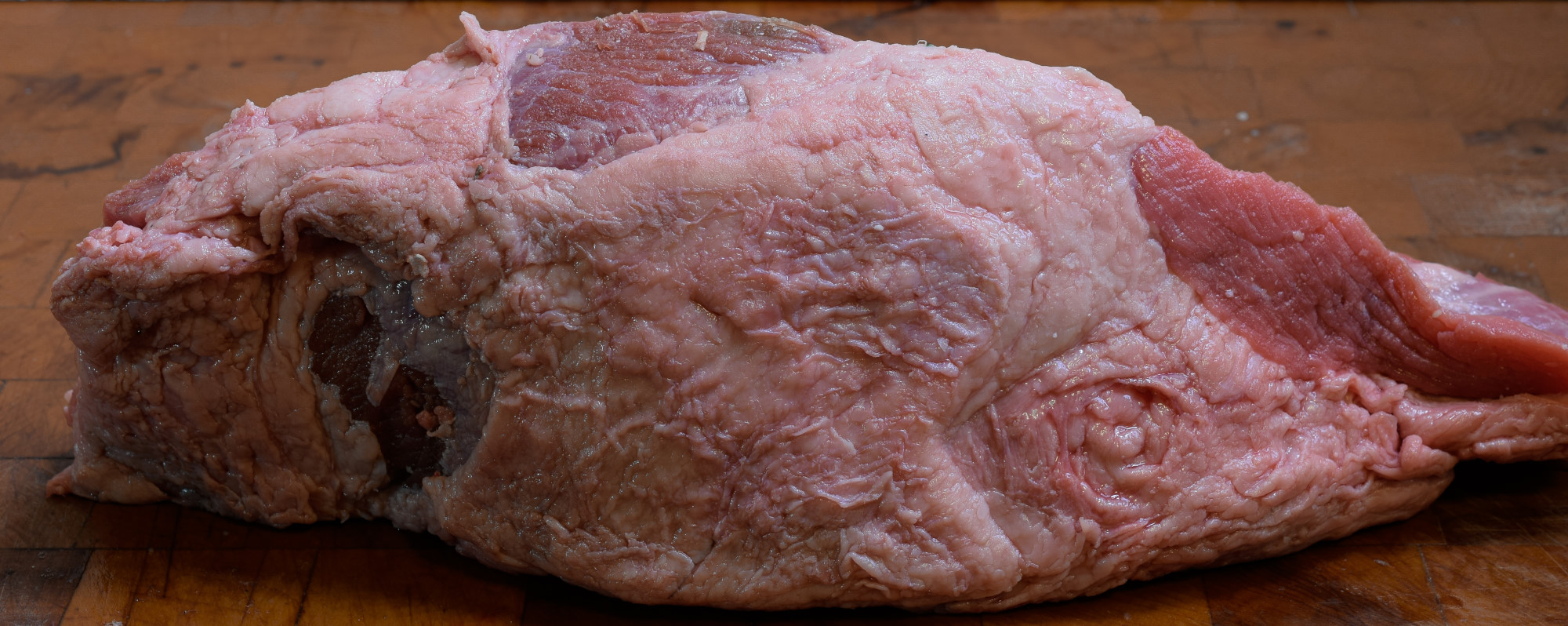
Untrimmed.
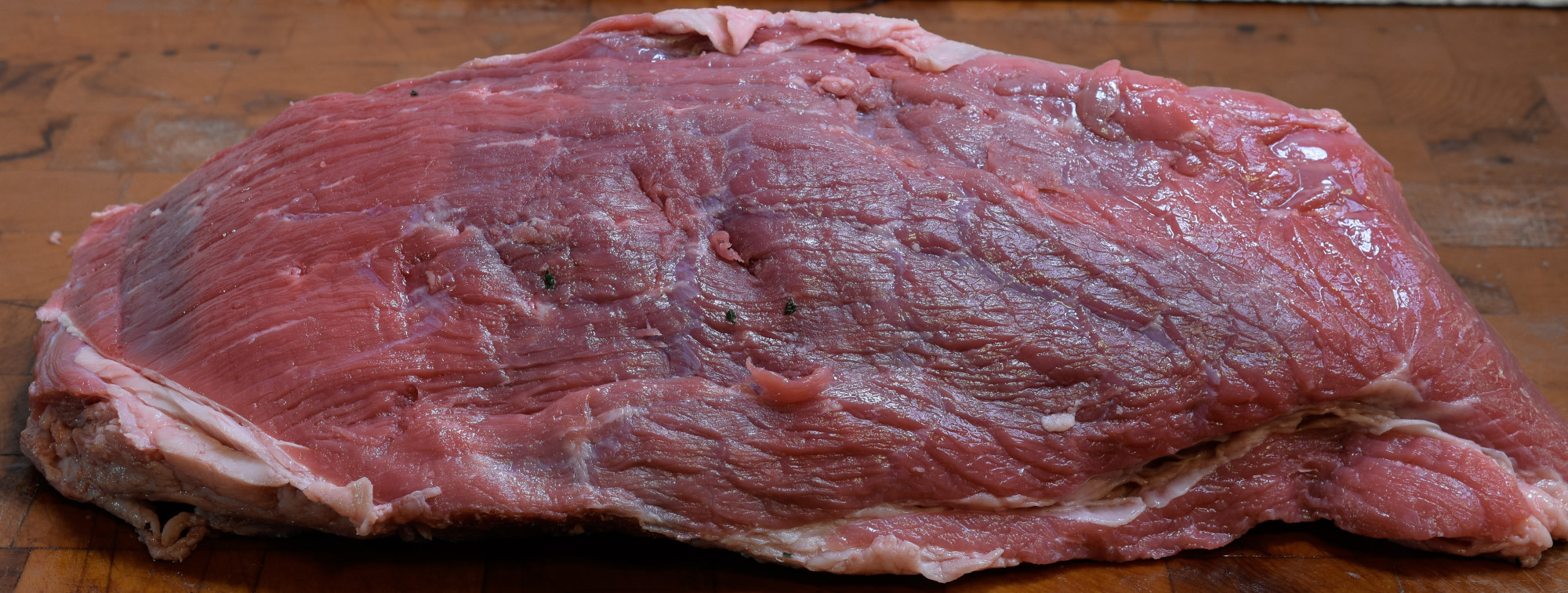
From the other side, the “cut” side.

Fully trimmed, weighing in at 1400 g/50 oz.
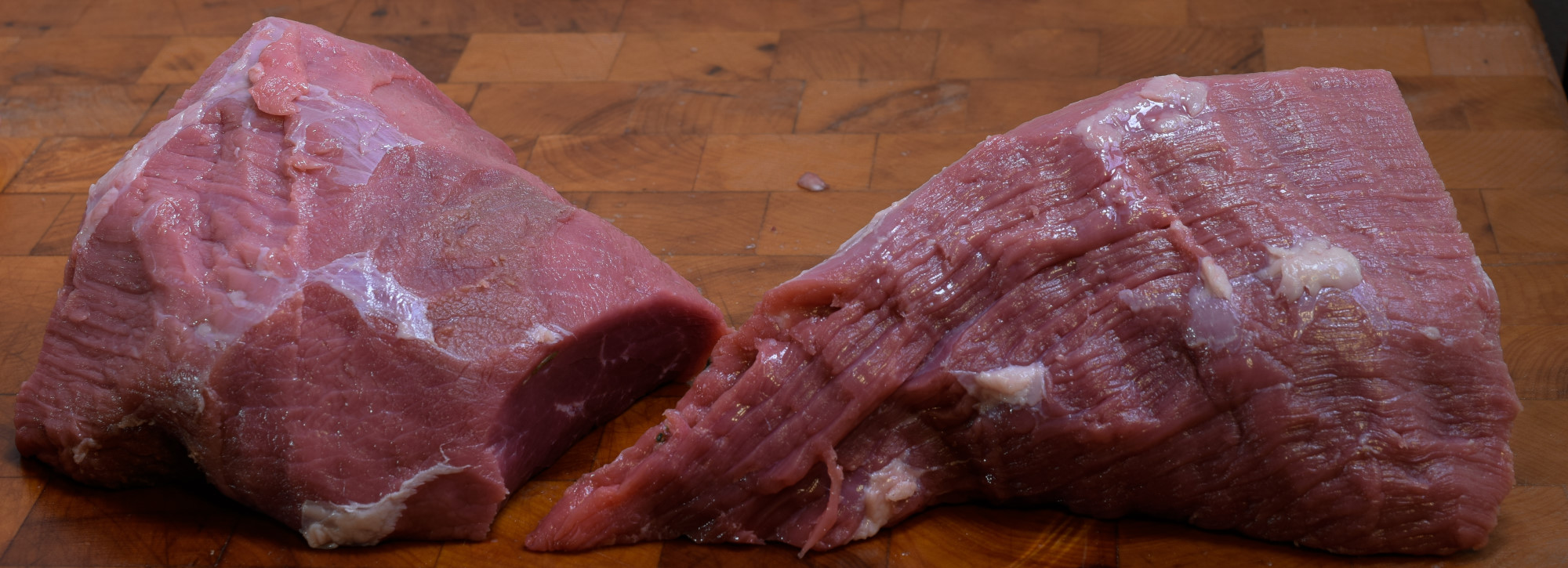
Cut in half, 709 g/25 oz each.
One of the pieces was “seasoned” with kosher salt in the amount of 1 teaspoon/450 grams (9 g total). Both pieces were vacuum sealed and sous vide processed at
140 F/60 C for 36 hours.
Both packages were shocked in iced water to 70 F/21 C, and then refrigerated to 40 F/4 C.

The one on the left had salt in the bag…
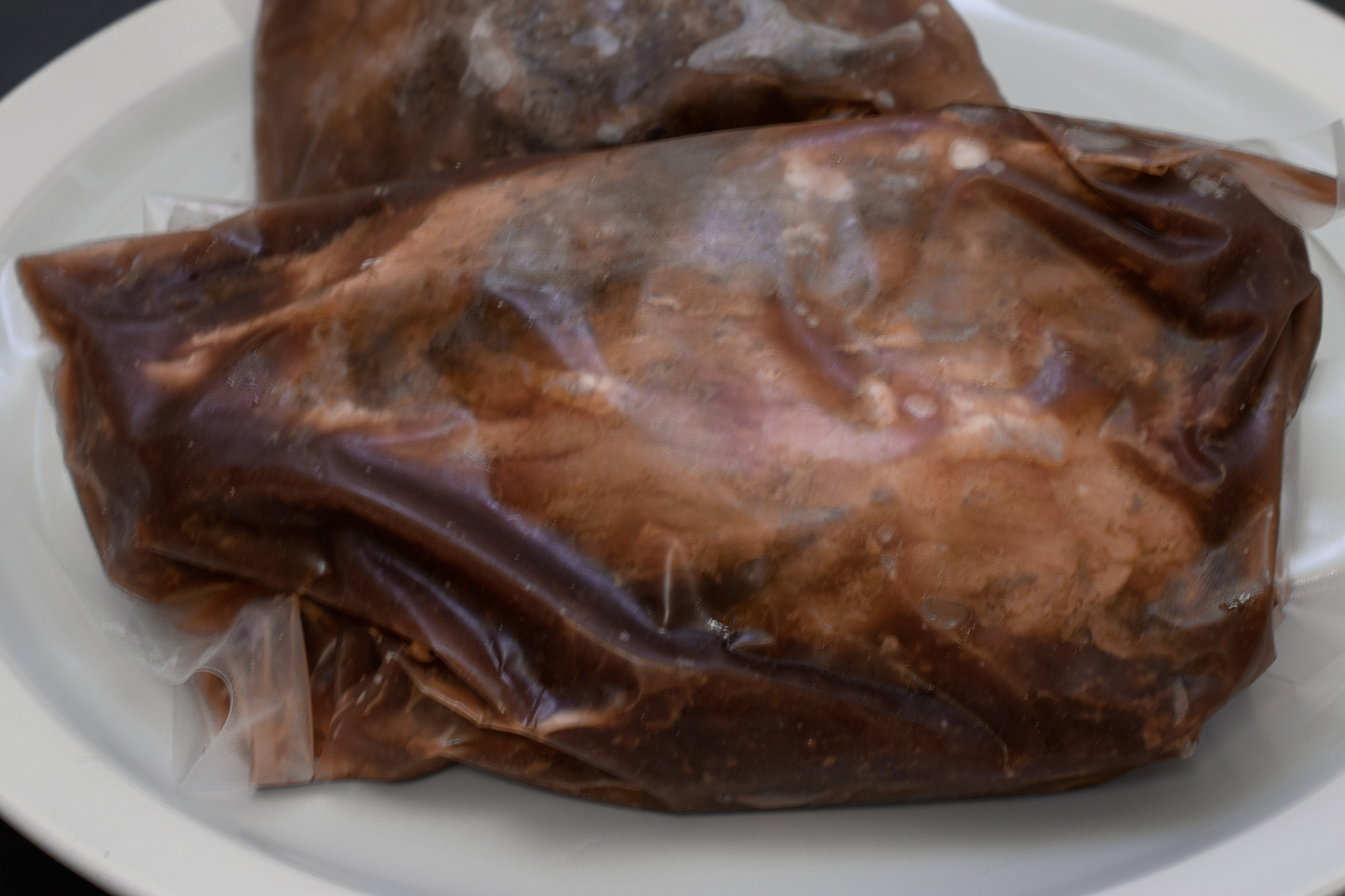
(above) unseasoned.

(above) seasoned.
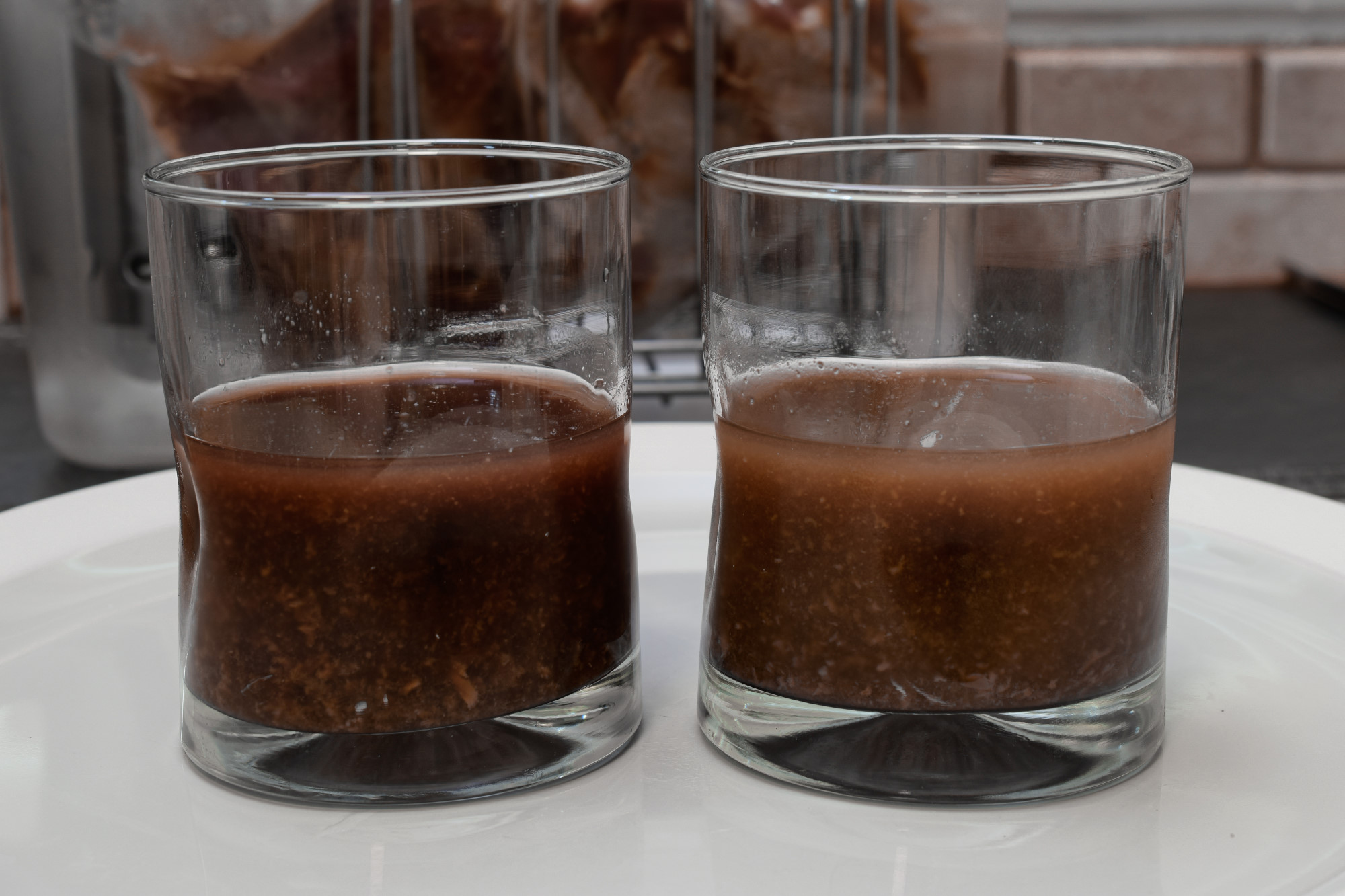
On the left, unseasoned. 6 fluid oz/178 ml/178 g. On the right, seasoned, 6 fluid oz/178 ml/185 g.
Note: Because of the nature of dissolution, adding NaCl to water in such small amounts will necessarily increase its mass, but not its volume. Allegorically, H2O molecules have “empty spaces” between them where the sodium ions reside. For a more detailed explanation of this phenomenon, click the link HERE.
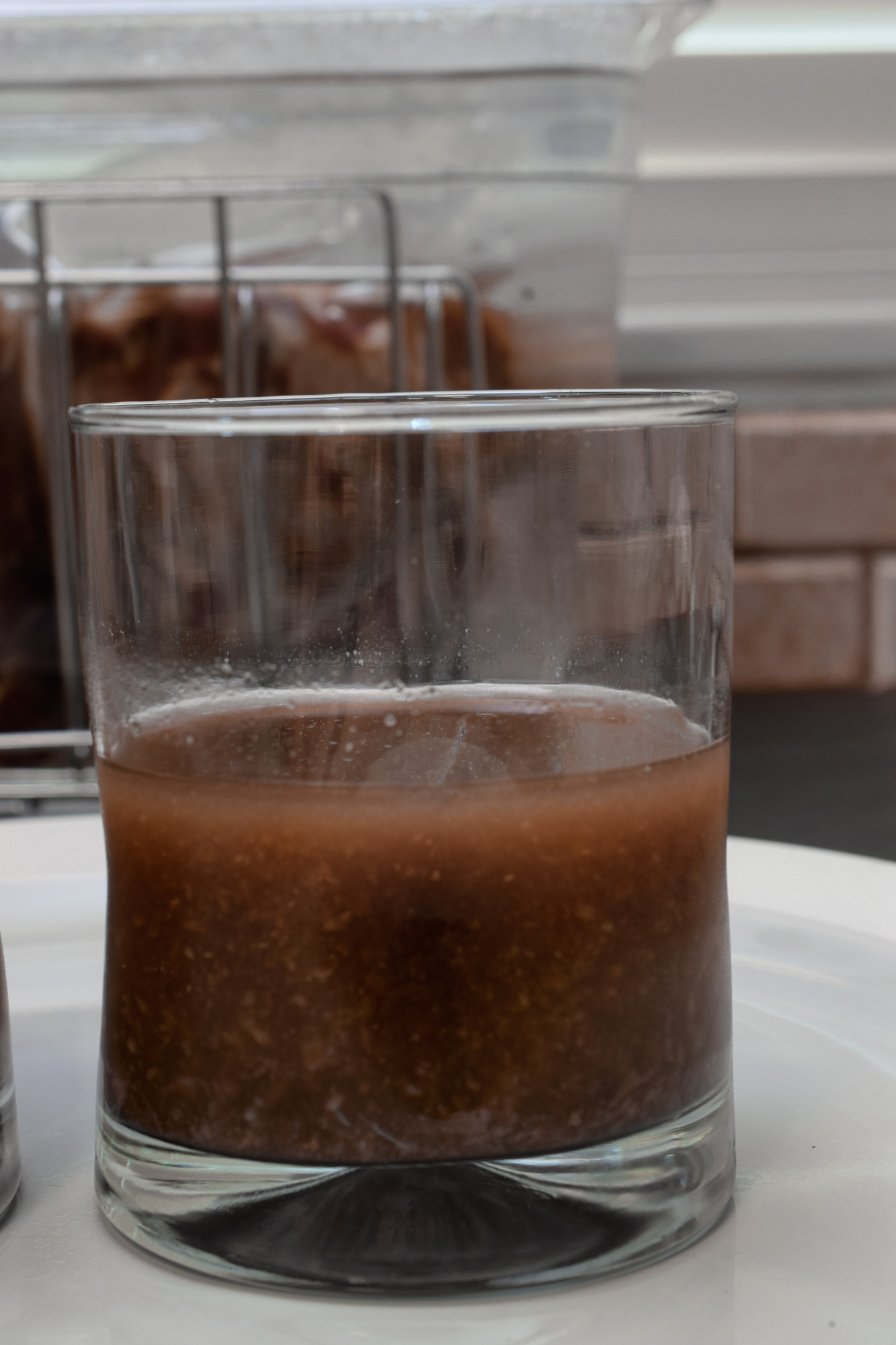
(above): seasoned.
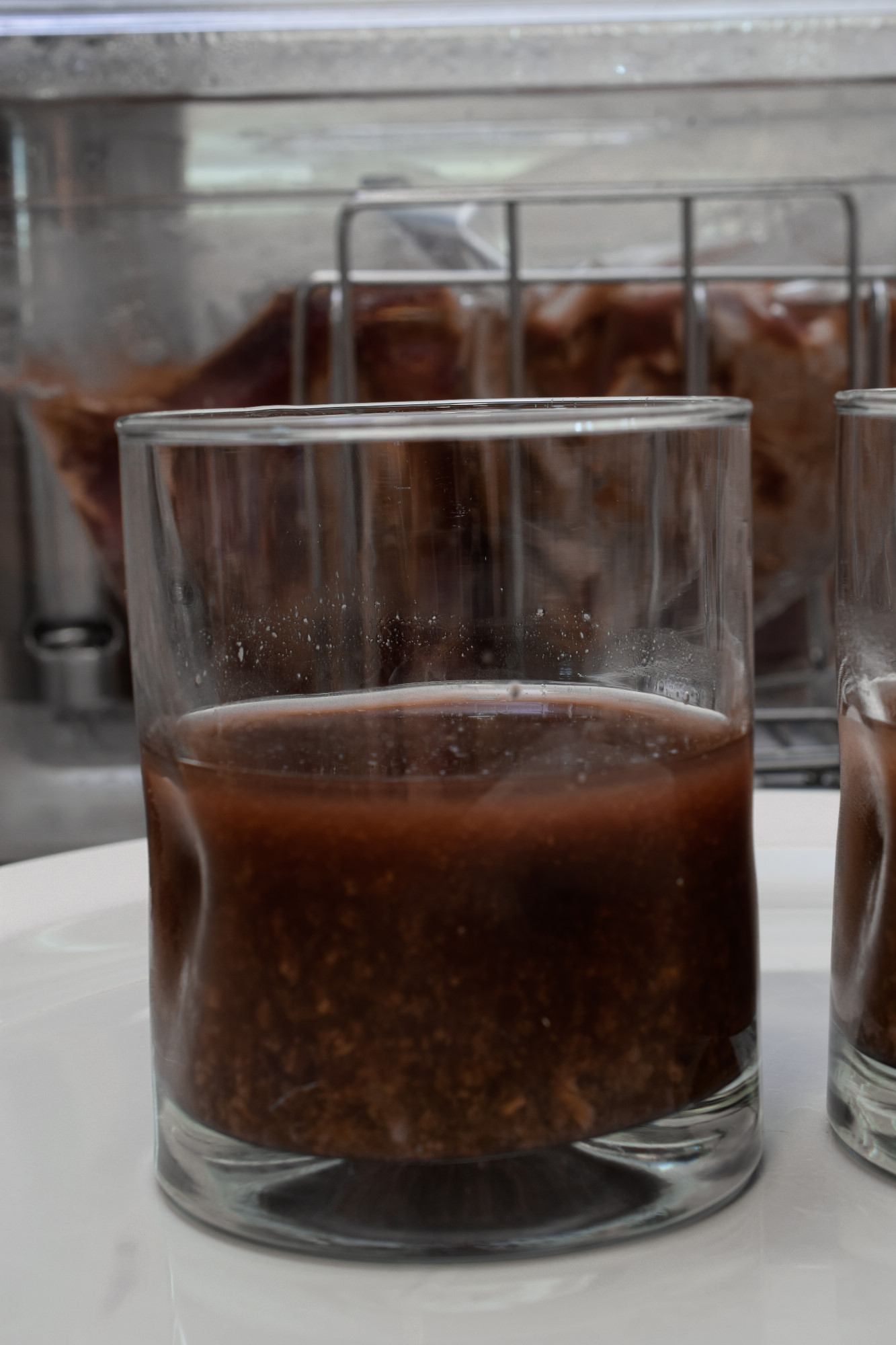
(above): unseasoned.
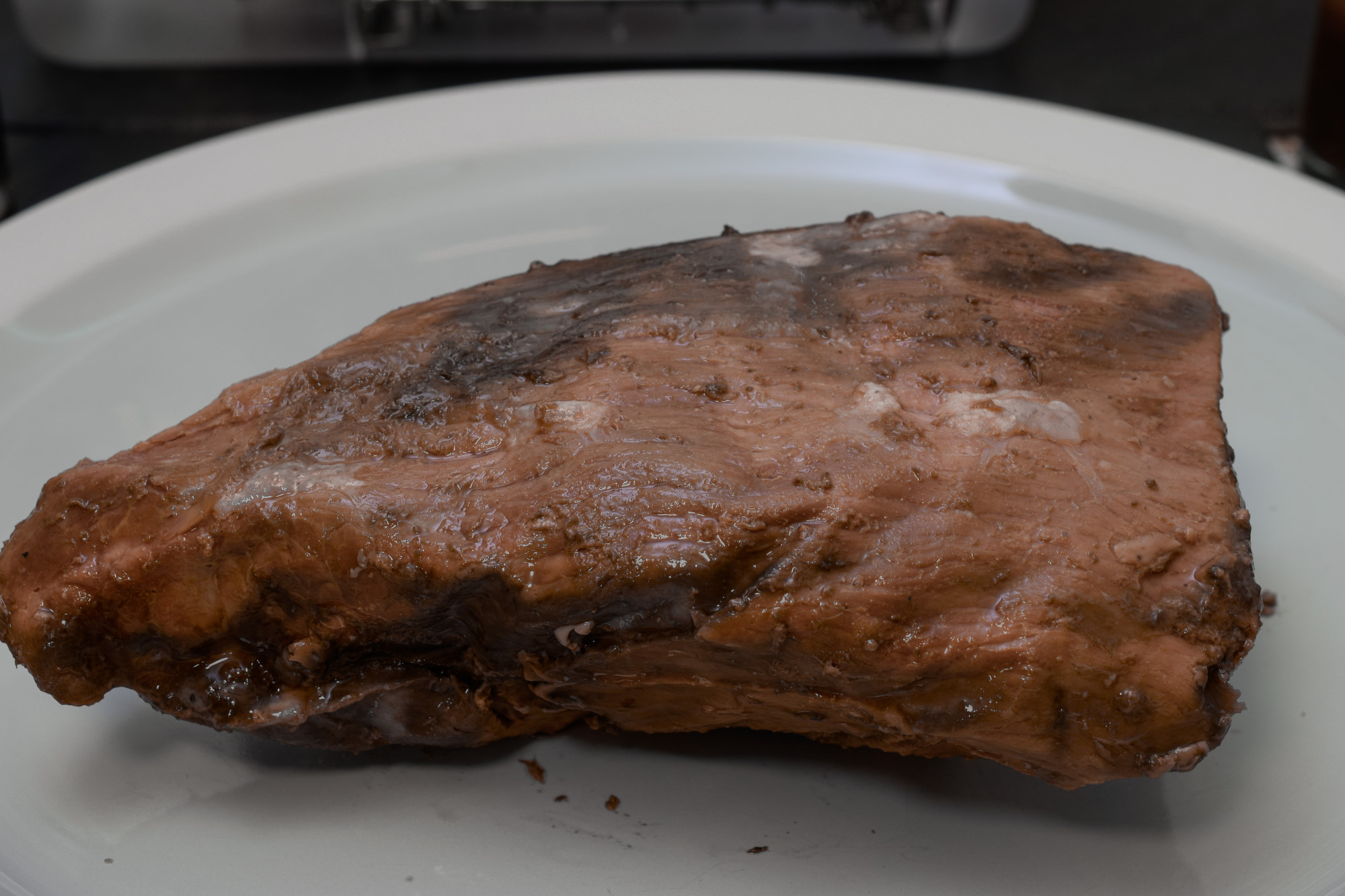
(above): unseasoned 19 oz/539 g.
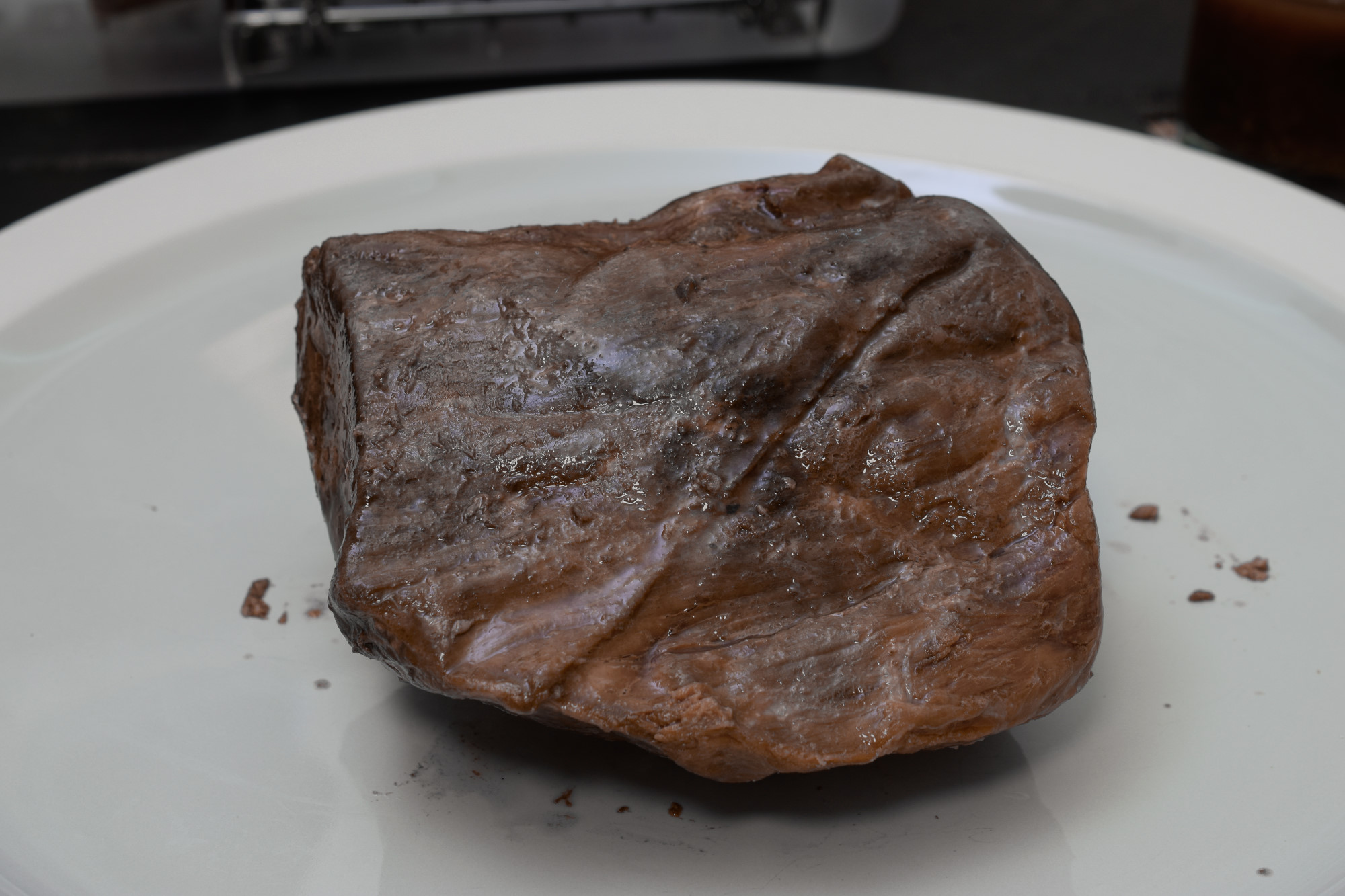
(above): seasoned, 19 oz/539 g.
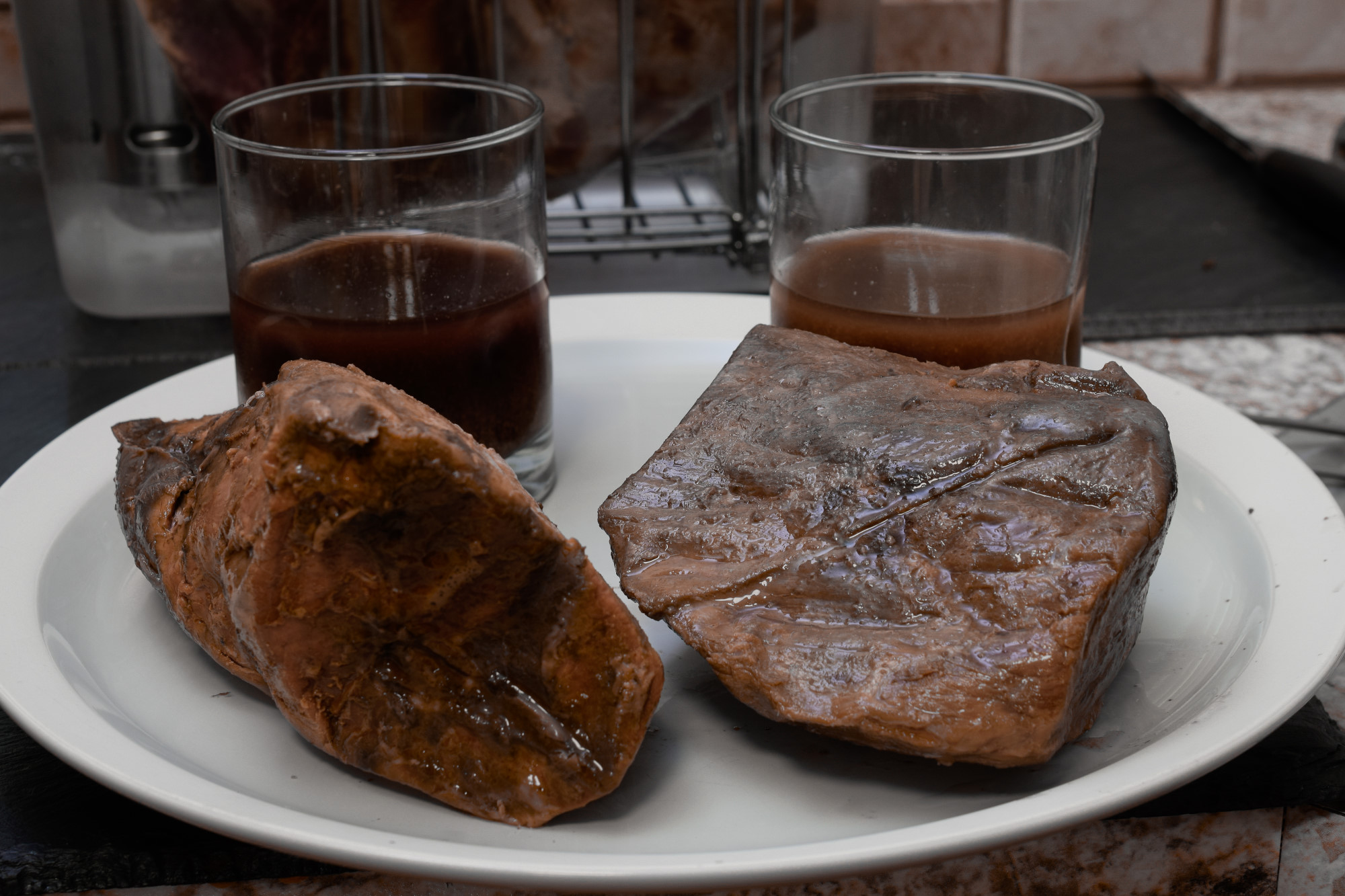
So
Within the limitations of accuracy available in the home, there was no detectable difference in moisture loss between the two pieces of meat. I know. This contradicts a lot of literature out there.
Just tell me what you want
Sure, I noticed a few things.
- The purge from the unseasoned roast was more “reddish” than the other one. That’s my opinion. I don’t have a mass spectrometer here in the trailer. Once clarified as per our PROCESS, the two liquids were the same color.
- The sous-jus from the seasoned roast was quite salty. Again, my opinion.
- I don’t trust anybody’s taste buds, much less my own. I seemed to taste salt on the surface of the seasoned one, but I can’t go any farther than that.
- Texture/tenderness the same as far as I can tell. Some bona fide experts out there claim that salt breaks down the bonds in proteins and tenderizes them, but I have never seen that in action. If that is true, why doesn’t a sous vide processed corned beef cook to tenderness faster than a sous vide processed fresh brisket?
Stay tuned
Norm King

